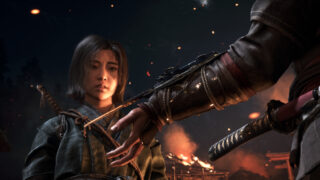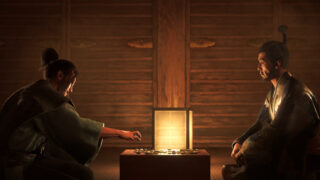The stakes couldn’t be much higher for Ubisoft’s next open-world epic. It’s now obvious that the company’s future could depend on the success of Assassin’s Creed Shadows, a game that itself relies on a setting that fans have been asking for since before ‘tower fatigue’ entered the repertoire. of games.
Although the delays have brought it uncomfortably close to other big hits, including the Ghost of Tsushima sequel due out this year, there’s no doubt that Shadows will be a better game for its extra development time and what we played in a recent Ubisoft press event. suggests that fans craving another monstrous open-world experience set in feudal Japan will get precisely what they’re looking for.
The game world in Shadows, spanning central regions of Japan such as Kyoto, Kobe, and Osaka during the Azuchi-Momoyama period, is surprisingly detailed, yet thankfully tones down the excess of icons that so often plagued previous Shadows games. Assassin’s Creed. Exploring its valleys, cities and rice fields is a totally Zen feeling that, thanks to clever changes to the user interface, feels more like a discovery than a search for landmarks.
Shadow Japan features lush recreations of the castle towns, grasslands, and mountains of the late 16th century. AC’s first current-gen exclusive game is really flexing its muscles here, with real-time wind rustling the foliage and the changing seasons replacing the red leaves of autumn with wintry branches and frozen lakes. This is a scenario that should have been delayed a decade in Assassin’s Creed, but it’s hard to imagine that the developers at Ubisoft were able to do it with this level of fairness before now.
And yet, for me, the Assassin’s Creed Shadows press demo was at its best during the more scripted sequences. In addition to the sandbox gameplay, we were allowed to see the more linear opening of the game, preceded by the new ‘Animus Hub’, which looks a lot like the Infinity franchise we heard about years ago. Here, players can scroll through each Assassin’s Creed character and directly launch their games (if they own them).
Assassin’s Creed Shadows features two playable characters. The first is the real-life figure, Yasuke, who was an uncommon African name in Japanese history books. Although there is some debate about his actual history, he is portrayed here as a samurai and the game‘s tank character, able to dash through walls and through multiple enemies with little effort. The second character, Naoe, fulfills the shinobi fantasy. She is a fictional daughter of real-life ninja Fujibayashi Nagato, who prefers to sneak across rooftops and dispatch her enemies in the shadows.

The opening of Shadows sees Yasuke, then a slave to the Jesuit missionaries known as ‘Diogo’, in his first meeting with the Japanese daimyo Oda Nobunaga. This sets up a narrative that, like FX’s award-winning Shogun series, explores a period in which Japan was forced to accept foreign influence, seen through the eyes of an outside protagonist.
From the beginning, Shadows doesn’t shy away from these themes, and Nobunaga, who, during this period, is nearing the end of his reign, directly asks about Diogo’s skin color and how he came to be that way. The daimyo sees potential in Diogo and decides to put him at his service in exchange for the freedom of the missionaries to practice Catholicism in their lands.
The story soon jumps to the future, when Diogo, now ‘Yasuke’, has transformed into his one-man army, killing shinobi and burning down the city of Iga in the name of his master. It’s here that we glimpse the potential of Shadows’ dual-protagonist narrative, as the story soon shifts to the point of view of Naoe, who is on the opposite side in the same battle, defending Yasuke’s objective.
Compared to Yasuke, Naoe feels much lighter and faster in combat, like a traditional Assassin’s Creed protagonist. You can’t simply brute force your way through encounters like the samurai, but instead have to dodge attacks and deal with unblockable moves, exposing your opponents to your parries. He can also crawl upside down and climb buildings with a hook.

Shadows’ story moments are dramatic, backed by a spectacular musical score, with some fantastic performances. It’s impossible not to be drawn to the Shogun comparisons, but there’s a bit of Tarantino in there too. In particular, the game‘s main antagonists, known as The Shinbakufu, are a group of colorful villains who feel like they came straight from the set of Kill Bill.
In the open world, especially in a preview event where we are basically in the middle of a 60-hour game, the tone of the experience of course changes from exciting and fast-paced to relaxed and open. term. Without a proper addition, it was difficult to see how Yasuke’s tank controls benefit exploration over Naoe’s Tenchu perfection, but fighting our way through an entire castle with samurai was certainly a welcome contrast.
If its narrative is cleverly woven into the larger package, Assassin’s Creed Shadows could prove a notable release for both fans of Valhalla and Odyssey’s national-sized sandbox, and those longing for a more cinematic Samurai story. It’s a difficult balance to strike, but Lord knows Ubisoft has enough time to plan for the franchise’s most anticipated scenario.

